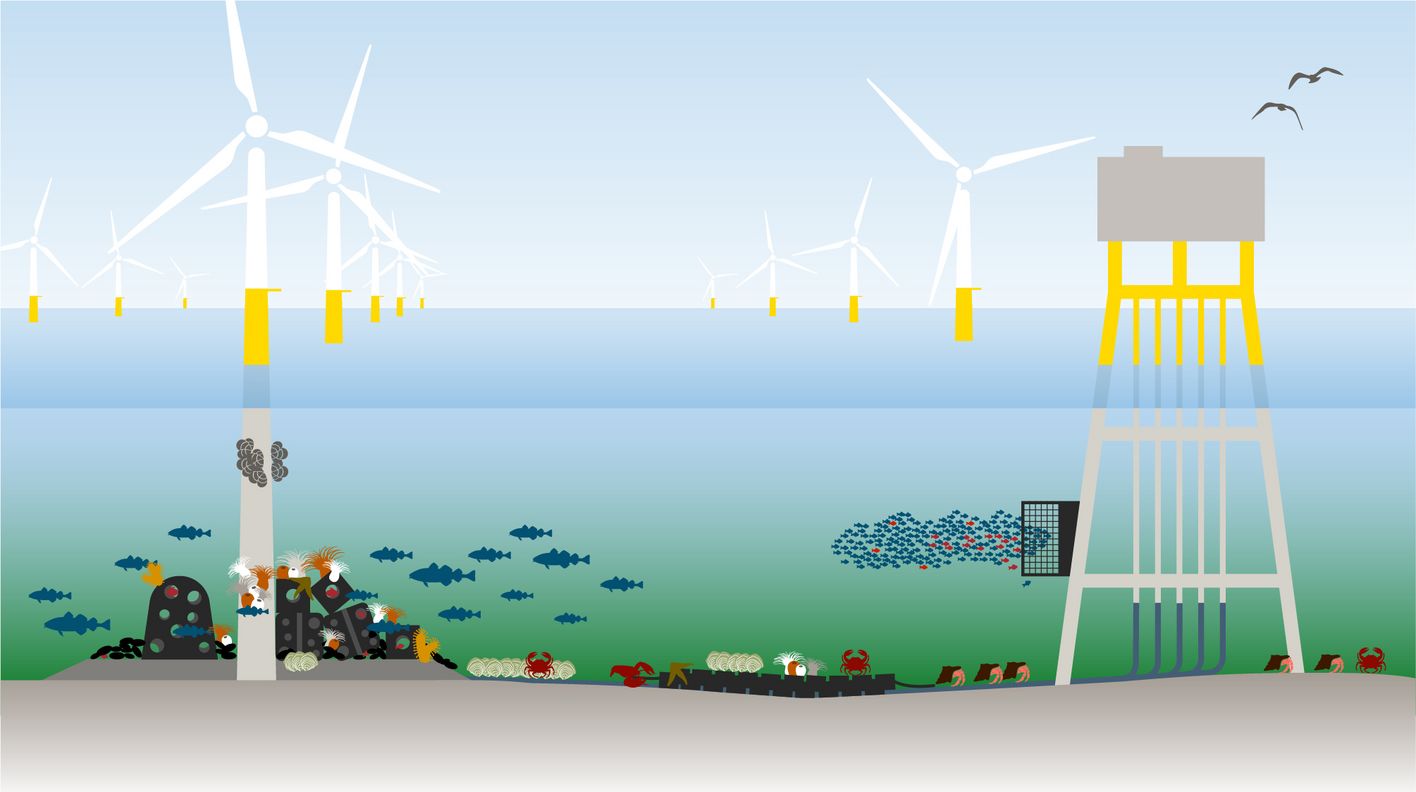-
Wind farms can contribute to active reinforcement of the ecosystem.
-
A catalog of nature-inclusive design options has been developed by Witteveen+Bos and Wageningen Marine Research.
Nature-inclusive designs for offshore wind farms
There will be some 11 gigawatts of wind farms in the Dutch North Sea by 2030. This may interfere with the proper functioning of the marine ecosystem. But the wind farms can also contribute to strengthening the ecosystem actively. Restoring degraded habitats in the North Sea can be given a boost by making smart adjustments to the design of offshore infrastructure. That’s the idea behind the Dutch government’s current policy.
Offshore wind farm permit holders will be obliged to take measures to increase the suitable habitat for naturally-occurring species in the North Sea. They are now looking for ways to set up their wind farms to be nature-inclusive. The practical question is: what opportunities are there to improve nature and what will they cost?
Catalogue with nature-inclusive design options
Witteveen+Bos and Wageningen Marine Research have created a catalogue of nature-inclusive design options. It focuses on measures for indigenous species under pressure, such as cod and flat oyster, although many other species can also benefit from the measures. The catalogue also covers a number of commercial species, such as the North Sea crab and the European lobster. Considerable attention is also devoted to small-scale fishing within offshore wind farms.
This catalogue shows relevant nature-inclusive design options for target species. This is divided into three different categories in terms of infrastructure, expected construction costs and possible suppliers and manufacturers. The ecological operation has been tested against the technical requirements of the offshore wind industry. The catalogue was commissioned by the Ministry of Agriculture, Nature and Food Quality.
